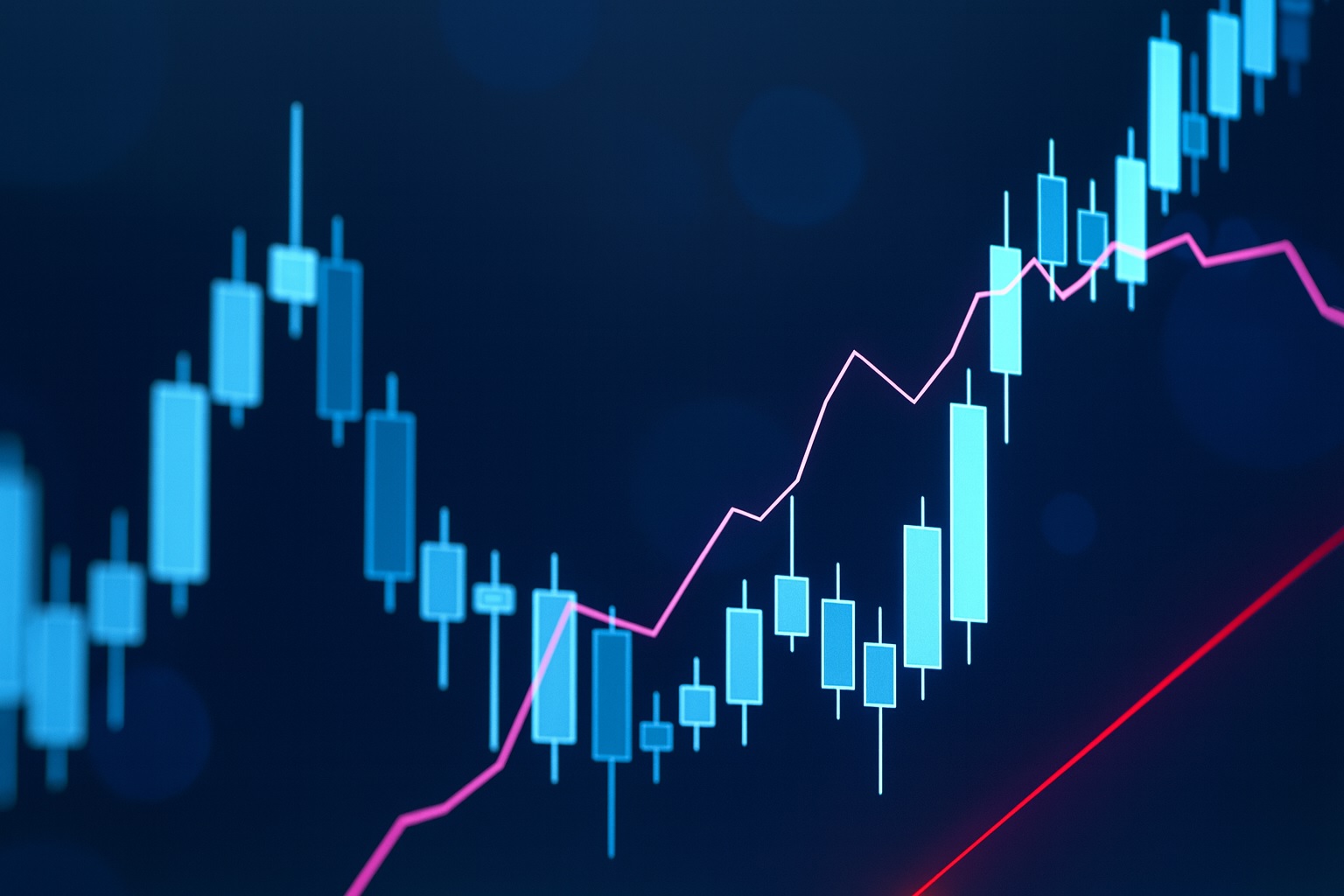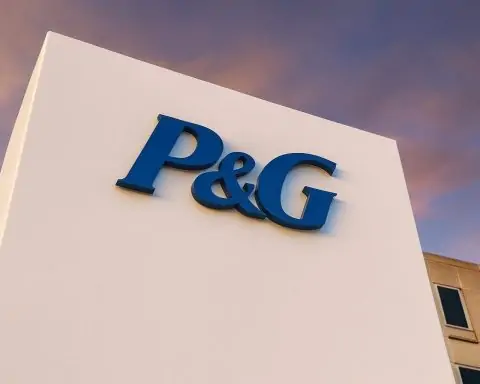- All Major Indexes at Record Highs: U.S. stocks rallied to new all-time highs on Monday. The S&P 500 topped 6,800 for the first time, closing around 6,875, while the Dow hit ~47,545 and the Nasdaq ~23,637 – each a record close [1]. Optimism over a potential U.S.-China trade truce drove the gains, with the Nasdaq jumping 1.86% and S&P 1.23% on the day [2].
- Trade Truce in Sight: Top U.S. and Chinese negotiators “hammered out” a framework for a trade deal over the weekend, to be reviewed by President Trump and President Xi at a Thursday meeting in South Korea [3]. President Trump voiced confidence that a deal will be reached and even announced a flurry of side agreements on trade and minerals during his Asia trip [4]. A deal would halt new U.S. tariffs and roll back China’s rare earth export curbs, easing tensions between the world’s two largest economies [5].
- Tech Stocks Lead the Charge: Trade optimism and a coming wave of Big Tech earnings sparked a tech rally. Qualcomm stock surged over 11% after unveiling new AI chips, and chipmakers AMD and Nvidia jumped ~6.5% and ~4.2% respectively on Friday’s trade-news anticipation [6]. The five biggest tech giants – Apple, Microsoft, Alphabet (Google), Amazon, and Meta – report earnings this week, a “Magnificent Seven” blitz that could sway the entire market [7]. Apple shares hit a fresh high, nearing a $4 trillion market cap amid the euphoria [8].
- Fed Rate Cut Expected: Investors are also betting on easier money. With U.S. inflation data cooling, markets see a 25 basis-point Federal Reserve rate cut as virtually certain at the Fed’s meeting concluding Oct. 29. Futures put the odds of a quarter-point cut at about 95–98%. Lower interest rates have been a pillar of 2025’s rally, and Fed Chair Jerome Powell has signaled more cuts are “on the table” if needed, given slower price growth and some economic soft spots [9] [10].
- Cautious Optimism Prevails: Despite the exuberance, experts urge caution. Valuations are stretched – the S&P 500’s price-to-earnings ratio is ~31, well above historical norms [11]. “Valuations continue to be the best argument for bears,” notes Nationwide’s Mark Hackett, warning that any unexpected “hiccup” could trigger a pullback at these lofty levels [12]. JPMorgan’s CEO Jamie Dimon also says he’s “far more worried” about today’s frothy market and sees risk of a “significant correction” if the current AI-driven boom falters [13]. Most investors remain “cautiously optimistic” – enjoying the rally while bracing for volatility [14] [15].
Trade Deal Hopes Ignite Global Rally
Global stock markets are surging on mere hopes of a U.S.-China trade peace. Over the weekend, high-level talks yielded “significant advances” toward an agreement to resolve the long-running trade war [16]. U.S. Treasury Secretary Scott Bessent described a “very substantial framework” now in place, and China’s negotiator Li Chenggang said both sides reached a preliminary consensus toward a deal [17] [18]. While no agreement is signed yet, the prospect of a truce has been enough to send markets to new heights [19]. Presidents Trump and Xi are slated to meet Thursday (Oct. 30) in South Korea to potentially bless the tentative deal framework [20].
On Monday, Wall Street eagerly priced in a positive outcome. The Dow Jones Industrial Average jumped 0.7% to 47,545, its highest level ever [21]. The benchmark S&P 500 surged 1.23% to roughly 6,875 [22], crossing the 6,800 milestone for the first time. The tech-heavy Nasdaq Composite spiked 1.86% to about 23,637, also a record [23]. It marked the second straight session of all-time highs, as stocks added to last week’s gains.
Trade-sensitive sectors led the charge. In particular, technology and industrial stocks – which were hit hard by tariffs – outperformed on hopes of tariff relief [24]. One standout was chipmaker Qualcomm, whose shares soared 11% after it unveiled new data-center AI chips, seen as a bold move into the booming artificial intelligence arena. “On Friday and over the weekend we heard there’s going to be positive things coming out of the Trump and Xi meeting. The market’s still up on that,” explained Scott Wren of Wells Fargo [25]. Investors aren’t expecting a comprehensive trade pact overnight, Wren added, “but I think they expect some grain sales, some assurance [on] rare earth elements… just an easing of tensions to some extent” [26]. In other words, even a partial deal or continued talks are enough to keep bullish sentiment alive.
The bullishness wasn’t confined to U.S. markets. Global stocks rallied broadly on the trade-deal optimism [27]. MSCI’s all-country world index hit an intraday record on Monday [28]. In Europe, the pan-European STOXX 600 index notched a fresh peak as well [29]. Notably, Spain’s IBEX 35 finally surpassed its 2007 record high on Tuesday, capping a 38% year-to-date surge as Spain’s economy outperforms its neighbors [30]. In Asia, markets likewise climbed after the U.S.-China progress; investors in China and Japan cheered the improving trade outlook and a more stable geopolitical backdrop. Safe-haven assets retreated in turn – gold prices fell and the U.S. dollar edged down against the euro, yuan, and other currencies as risk appetite grew [31] [32]. Even agricultural commodities got a lift: soybean and corn prices rose on hopes that a trade deal would spark fresh Chinese buying of U.S. farm goods [33]. As CNBC quipped, global markets are hitting highs on the mere prospect of a U.S.-China deal – before any deal is even official [34].
Fed Rate Cut on Deck as Confidence Grows
Another major catalyst for the market’s record run is anticipation of a more dovish Federal Reserve. With inflation showing signs of cooling, traders are convinced the Fed will deliver a quarter-point rate cut this week – its second rate reduction this fall. According to CME FedWatch data, the probability of a 0.25% cut at the Oct. 28–29 meeting is around 95–98%. In effect, Wall Street has “all but locked in” a Fed rate cut in its outlook [35].
Investors see easier monetary policy as crucial “insurance” to extend the economic expansion. The latest Consumer Price Index report came in slightly cooler than expected, bolstering the case that inflation is moderating [36]. Core price pressures have eased enough to put the Fed “on track” for another cut, Reuters notes [37]. Fed officials have hinted at more accommodation: Governor Christopher Waller recently flagged softening labor markets, and Fed Chair Jerome Powell said further easing remains “on the table” if needed [38]. Lower interest rates support higher stock valuations by reducing borrowing costs and making bonds less attractive by comparison. As TS2.tech observes, the mere prospect of Fed cuts has been a “key pillar” of the 2025 equity rally, helping propel risk assets upward [39] [40].
This week actually brings a flurry of central bank meetings globally. The Fed’s announcement on Wednesday is the centerpiece. The European Central Bank and Bank of Japan are also convening, though both are expected to hold rates steady. (The BOJ is debating if conditions are right to finally raise rates from ultra-low levels as Japan sees economic improvement, but many expect it to stay on hold for now.) The broad expectation of continued easy money – or at least no new tightening – has added fuel to 2025’s market momentum.
Yields on longer-term bonds have actually eased a bit in anticipation of Fed support. The U.S. 10-year Treasury yield hovered just below 4.0% on Monday, down from recent highs above 4.5% earlier in the fall [41]. As yields slip and liquidity remains ample, equities become more attractive. In fact, some analysts say the market is in a “sweet spot” of cooling inflation and robust earnings, which gives the Fed cover to cut rates without stoking fears of recession [42] [43]. “The mere prospect of a U.S.-China deal has already buoyed markets,” noted a TS2 market commentary, “spread(ing) optimism… that the Trump-Xi talks plus Fed easing will extend the bull run” [44] [45].
Tech Giants Surge Ahead of Earnings
The technology sector – at the heart of both trade war impacts and the 2025 rally – is taking center stage. This week is one of the most consequential earnings weeks in recent memory, as five members of the vaunted “Magnificent Seven” (Apple, Microsoft, Alphabet, Amazon, Meta) are all set to report quarterly results between Wednesday and Thursday [46]. Together these five companies alone account for roughly one-third of the S&P 500’s entire market capitalization [47], meaning their performance and guidance could sway the direction of the whole market.
Investors have driven tech shares sharply higher in anticipation of blockbuster earnings. Apple, for instance, just hit a record stock price, putting its market cap near the $4 trillion mark – an unprecedented valuation for any U.S. company [48]. The iPhone maker has enjoyed booming sales of its latest devices, contributing to a 38% surge in its stock this year. Other tech titans have also posted impressive year-to-date gains: Alphabet (Google) is up about 38% in 2025, Microsoft +25%, and Meta (Facebook) +28%, according to TS2 data [49]. This $6 trillion increase in big-tech value has been fueled by enthusiasm around artificial intelligence and resilient consumer demand [50].
The semiconductor industry’s strength underscores the tech optimism. On Friday, chip stocks rallied hard after signs of trade détente emerged. Advanced Micro Devices (AMD) leapt ~6.5% and Nvidia ~4.2% in one day [51], as traders bet that easing U.S.-China tensions would benefit chipmakers (which had been caught in export restriction crossfire). Other hardware names climbed as well – e.g. Intel rose ~3.8% and Micron ~3.1% [52] – helping push the Nasdaq to new highs. “FOMO (fear of missing out) appears to be driving the rally,” observed Carson Group’s Ryan Detrick, noting traders are piling into 2025’s high-flying tech winners ahead of earnings [53]. The result is a market that is “priced for perfection” when it comes to tech earnings [54].
Expectations are indeed lofty. Analysts forecast solid growth from the Big Tech cohort, though “not stratospheric” numbers [55]. For example, Microsoft’s revenue is expected to rise about 15% (to ~$75 billion) with double-digit profit growth, and Alphabet’s sales are forecast up ~13% to just under $100 billion [56]. Amazon is projected to see ~12% higher revenue (~$178B) as its cloud unit stabilizes [57]. These are healthy increases, but any miss versus these rosy estimates could jolt the market. That’s why this earnings wave is considered a “make-or-break” moment for the rally [58]. If the tech giants mostly beat expectations – as over 85% of S&P companies have done so far this quarter [59] [60] – it would reinforce the bullish narrative that strong fundamentals (not just hype) are propelling stocks [61]. Already, 87% of reporting S&P firms have exceeded profit forecasts, a remarkably high hit rate that one strategist called “a spectacular start to earnings season… justifying the rally” [62]. Strong tech earnings could extend that trend. On the other hand, any big disappointment from a market leader could spark a rapid sentiment reversal given how much optimism is baked in.
Experts Split: Euphoria vs. Early Warnings
With stocks at record heights, the debate on Wall Street has intensified: Are we in the midst of a justified boom or a fragile bubble? Bullish analysts argue the rally rests on real improvements – cooling inflation, improving U.S.-China relations, and stellar corporate earnings – which together “justify” the market’s rise [63]. They point to signs of economic resilience (U.S. GDP has stayed solid, unemployment is low) and the fact that most companies are outperforming expectations. “It’s been a spectacular start to earnings season, and that’s justifying the rally,” said Ryan Detrick of Carson Group, highlighting how broad the profit beats have been [64]. In this view, as long as the Federal Reserve is easing and a trade deal comes through, upside momentum can continue. Many investors are content to ride the wave – a bit of “FOMO” is in the air as people rush to buy the winners before it’s too late [65].
Bearish voices, however, are growing louder the higher the market climbs. A number of veteran market strategists and economists worry that asset prices have detached from fundamentals. Stock valuations are a chief concern – the S&P 500 now trades around 31 times earnings, well above its long-term average (in the low 20s) [66]. The market’s total capitalization relative to the economy (the “Buffett indicator”) has also swelled to historically high levels [67]. “Valuations continue to be the best argument for bears,” warns Mark Hackett, chief of investment research at Nationwide, meaning even a small shock could send stocks tumbling from these rich levels [68]. Ameriprise strategist Anthony Saglimbene agrees, cautioning that at record highs, “any unexpected ‘hiccup’ could trigger a pullback” [69]. Essentially, the margin for error is thin.
Even some prominent bulls are urging prudence. Jamie Dimon, CEO of JPMorgan Chase, struck a notably wary tone about market froth. He said recently he’s “far more worried about asset bubbles” and wouldn’t be surprised by a “significant correction” if the current euphoria (especially around AI-focused stocks) fades [70]. Global regulators, too, have quietly flagged that stock prices may be “stretched” and vulnerable if conditions change [71]. To manage these risks, many fund managers describe themselves as “cautiously optimistic” – bullish but with one foot near the door [72]. They’re enjoying the rally but also rotating into some defensive plays, raising a bit of cash, or hedging with options, just in case volatility returns [73].
The next few days will be critical in determining who’s right. The Federal Reserve’s rate decision on Wednesday and any guidance about future policy will set the tone for bond and stock markets. Then, the Trump–Xi meeting on Thursday will show whether the much-hyped trade “peace” materializes or gets deferred – any surprise hitch in negotiations could jolt markets that have priced in smooth sailing [74] [75]. Finally, the flood of Big Tech earnings will reveal if these companies truly have the growth to back up their towering valuations [76]. A slew of strong results could unleash another leg higher for stocks; a big miss (or cautious forward guidance) from a tech titan could spur a sharp rethink.
For now, the market mood is optimistic but tinged with vigilance. “Cautiously optimistic,” as many pros say [77]. As one trader joked, we’re all farmers praying for rain – eagerly awaiting an end to the trade war – and betting on a bountiful harvest when it comes [78]. The historic rally in stocks reflects a belief that a Goldilocks scenario is achievable: cooling prices, robust profits, and geopolitics tilting toward peace. Whether that hopeful narrative holds will be tested in the coming days. Bulls are pointing to the strong fundamentals and policy support in their favor, while bears remind everyone that markets have “climbed too far, too fast” and gravity may kick in [79]. All eyes now turn to Washington and Beijing, and to earnings conference calls – the catalysts that could either extend this record-breaking run or finally bring the long-awaited reality check.
Sources: Reuters [80] [81] [82], CNBC [83], TechStock² (TS2.tech) [84] [85], and other financial news reports. All market data and quotes as of Oct. 28, 2025.
References
1. www.reuters.com, 2. www.reuters.com, 3. www.reuters.com, 4. www.reuters.com, 5. www.reuters.com, 6. ts2.tech, 7. ts2.tech, 8. ts2.tech, 9. ts2.tech, 10. ts2.tech, 11. ts2.tech, 12. ts2.tech, 13. ts2.tech, 14. ts2.tech, 15. ts2.tech, 16. ts2.tech, 17. ts2.tech, 18. ts2.tech, 19. torre.news, 20. www.reuters.com, 21. www.reuters.com, 22. www.reuters.com, 23. www.reuters.com, 24. ts2.tech, 25. www.reuters.com, 26. www.reuters.com, 27. www.reuters.com, 28. www.reuters.com, 29. www.reuters.com, 30. www.reuters.com, 31. www.reuters.com, 32. www.reuters.com, 33. ts2.tech, 34. torre.news, 35. ts2.tech, 36. ts2.tech, 37. ts2.tech, 38. ts2.tech, 39. ts2.tech, 40. ts2.tech, 41. www.reuters.com, 42. ts2.tech, 43. ts2.tech, 44. ts2.tech, 45. ts2.tech, 46. ts2.tech, 47. ts2.tech, 48. ts2.tech, 49. ts2.tech, 50. ts2.tech, 51. ts2.tech, 52. ts2.tech, 53. ts2.tech, 54. ts2.tech, 55. ts2.tech, 56. ts2.tech, 57. ts2.tech, 58. ts2.tech, 59. ts2.tech, 60. ts2.tech, 61. ts2.tech, 62. ts2.tech, 63. ts2.tech, 64. ts2.tech, 65. ts2.tech, 66. ts2.tech, 67. ts2.tech, 68. ts2.tech, 69. ts2.tech, 70. ts2.tech, 71. ts2.tech, 72. ts2.tech, 73. ts2.tech, 74. www.reuters.com, 75. www.reuters.com, 76. ts2.tech, 77. ts2.tech, 78. torre.news, 79. ts2.tech, 80. www.reuters.com, 81. www.reuters.com, 82. www.reuters.com, 83. torre.news, 84. ts2.tech, 85. ts2.tech








